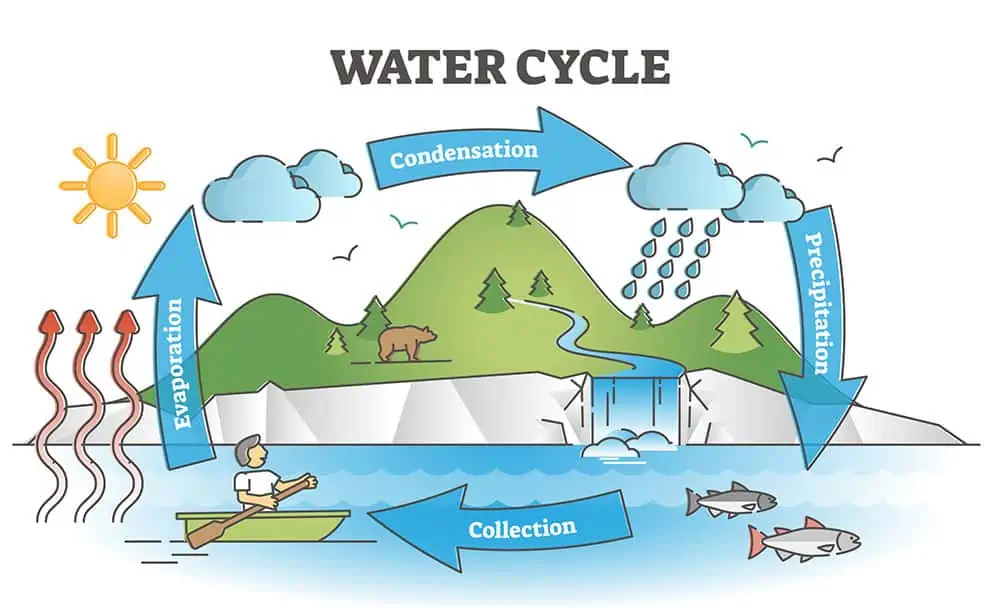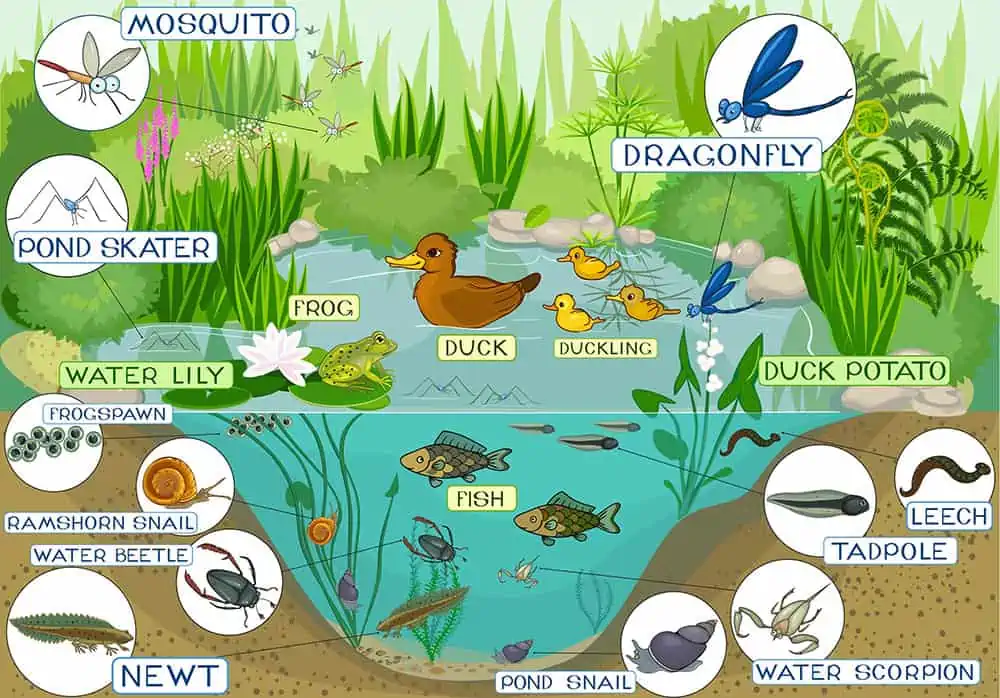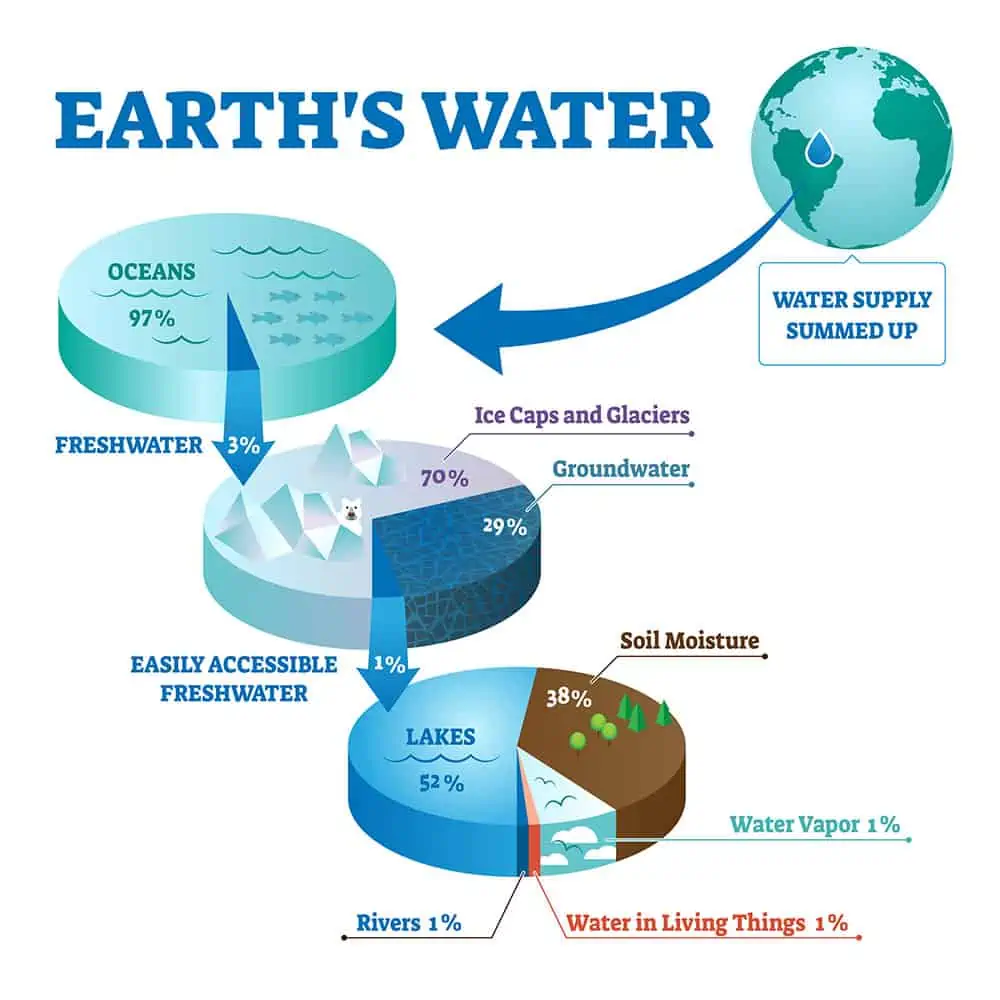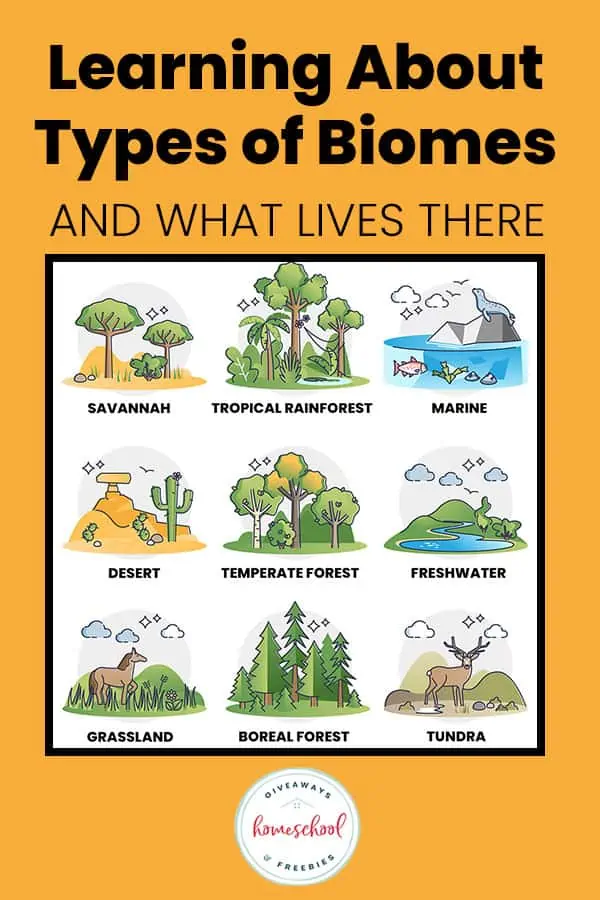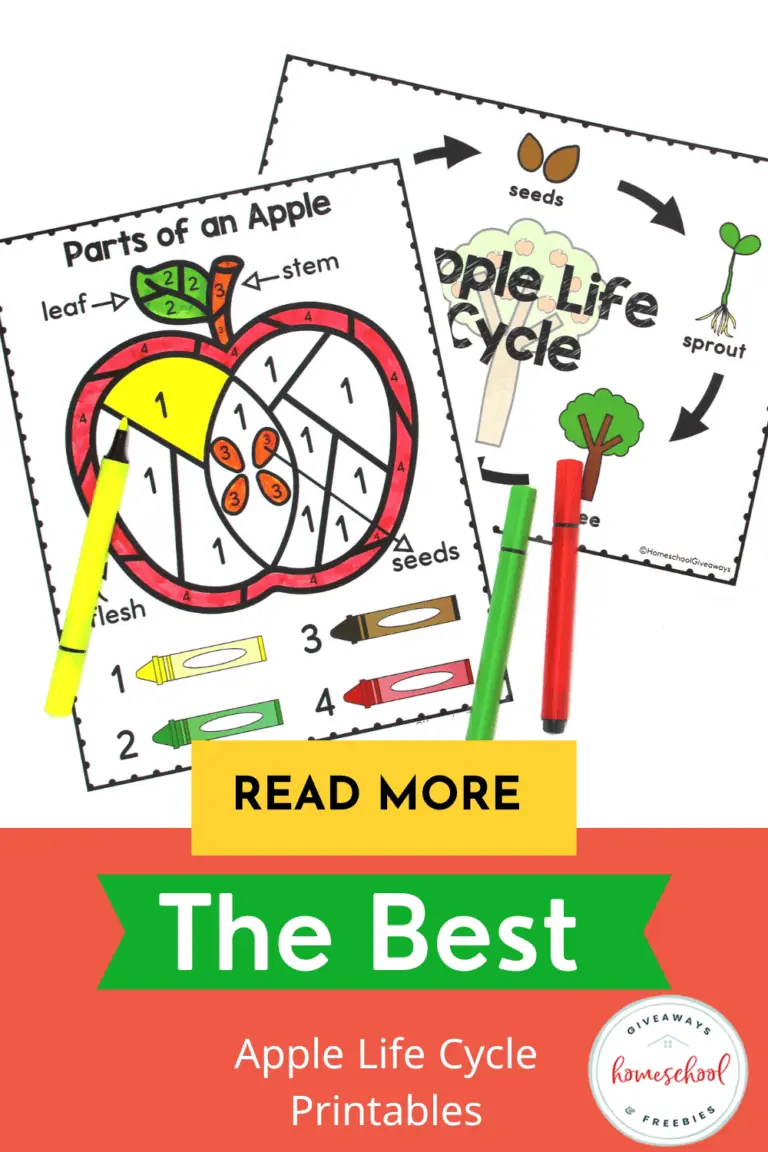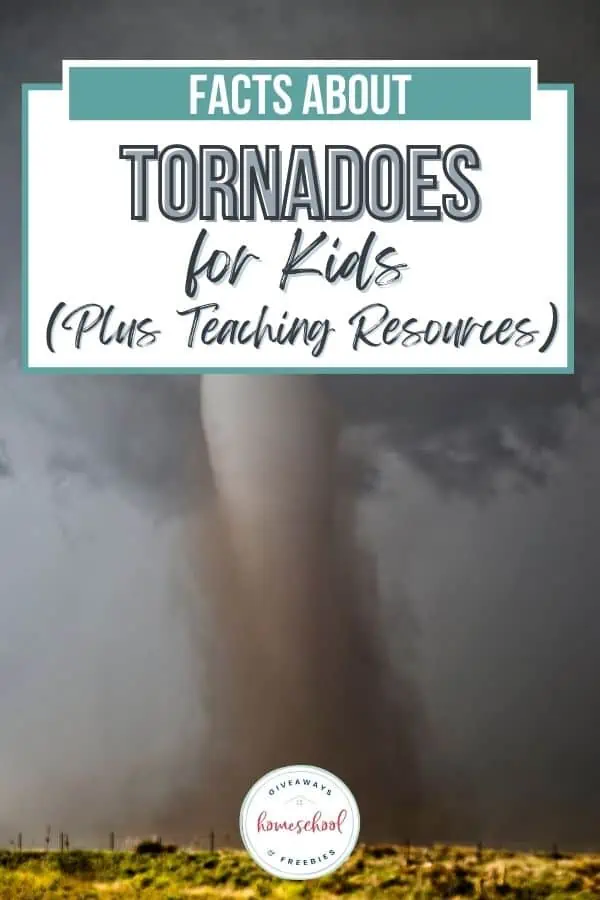Interesting Freshwater Ecosystem Facts for Kids
Published:
August 12, 2022
Contributor:
Jeannette Tuionetoa
Disclosure: This post may contain affiliate links, meaning if you decide to make a purchase via my links, I may earn a commission at no additional cost to you. See my disclosure for more info.
The core source of our drinking water supply comes from the freshwater ecosystems. Explore this super important ecosystem with these interesting freshwater ecosystem facts for kids.
Fresh Water Ecosystem Facts
Can you imagine life without fresh drinking water? You probably can’t imagine it because there would be no life without it. Learn more facts below about freshwater sources that play such a vital role in our world.
If you are teaching about biomes for kids, then freshwater biome is a great starting place when exploring the different types of biomes.
Fresh Water Ecosystem Facts
- Freshwater ecosystems can be described as naturally occurring water that can be found on planet earth.
- If you ever heard of the water cycle then you know freshwater is created by the water cycle. It is a complex system that requires a variety of factors and many different processes. Liquid water evaporates into water vapor. It then condenses to form clouds and precipitates back to earth via rain and snow. Water in different phases moves through the atmosphere.
Freshwater Biome Description
Freshwater biomes can be described as water containing very little to no amount of salt at all. The waters in freshwater biomes can be standing (ponds, lakes) and running (rivers).
Where are freshwater biomes located?
Freshwater biomes are located in rivers, streams, lakes, ponds, ice sheets/ice caps/glaciers, and aquifers.
Freshwater Characteristics
The most significant freshwater characteristic is that the body of water itself has very low concentrations of dissolved salts – it isn’t saline water like an ocean.
Interesting Freshwater Biome Facts
There are some interesting facts about freshwater biomes. The freshwater biomes are formed by something called the water cycle. The water cycle creates freshwater by the water that is evaporated from the oceans or seawater.
This evaporated seawater later falls back into the earth’s surface as precipitation. That precipitation comes down on the earth in the form of rain and snow.
Freshwater Biome Climates
The climate in freshwater biomes is determined by many factors like location, season, and depth of water. As the water gets deeper, the temperatures tend to decline and get colder. The temperatures can range from 65 °F to 75 °F in the summer season and 35 °F to 45 °F in the winter season.
Freshwater Habitats
The freshwater habitat is full of places that animals call home. From snails under a water log to river dolphins playing in the water, freshwater habitats are buzzing with activity.
Freshwater habitats include rivers and streams, lakes and ponds, and wetlands that include swamps, ditches, marshes, and bogs.
Rivers and Streams
The moving bodies of freshwater ecosystems have some interesting facts to describe them. Here are just a few:
- Rivers usually start at a high point, maybe on a mountain or hill, and then they flow downward. Some rivers can spring up from lake overflows, then move eventually towards a lower elevation.
- The endpoint of a river is called the “mouth” and is often found near large bodies of water like the sea or ocean. At this point, some of the water is mixed and is fresh water and salt water (called ecotone). Some organisms have found how to thrive in this mixed area.
- Streams and rivers are among the most powerful forces on Earth. Rivers are powerful enough to move items as large as cars even. That is why rivers are an amazing source of generating electricity.
- Rivers and streams’ continuous flow of movement carves their way to create valleys and canyons.
- The Amazon River located in South America is the largest river in the world but by discharge volume of water. It is often compared to the Nile River as it is disputed as the longest river in the world.
Lakes and Ponds
The main difference between ponds and lakes is that lakes are more extensive than ponds are. Ponds also generally allow more light to pass through them to the bottom more so than lakes do.
Some more interesting facts about ponds and lakes:
- Many ponds around the globe are seasonal, meaning they last only a few months out of the year., while lakes can exist for hundreds and hundreds of years.
- Ponds and lakes are usually separated by larger bodies of water like seas or rivers.
- There are three different zones to classify ponds and lakes, pelagic zone, littoral zone, and benthic zones.
- A lake is the largest freshwater biome.
Wetlands
We think of wetlands as marshes, bogs, ditches, and swamps but not many know that wetlands hold a pretty important role in our environment. They can be described as land covered by water, whether it be freshwater, saltwater, or a mix of the two.
Wetlands are known as the world’s natural waste-water treatment facilities and carbon-storing champions (World Wildlife). They also are a source of food security.
Wetland ecosystems support the development of rice which is a staple in most homes across the globe.
The wetlands also have some more vital roles:
- Wetlands are a staple diet of the world’s population
- Wetlands provide flood control
- They provide clean water
- Wetlands form the shoreline
- They provide storm protections
- They contain valuable materials
- Wetlands house medicines (i.e. water lilies are often used for swollen limbs or digestive problems)
- They are habitats for wetland plants and animal species
Many mammals depend on wetlands for food and shelter like otters, beavers, and even tigers.
Fresh Water Ecosystem Information
Yes, we drink fresh water, but do your children know that thousands of different animals and plants (vegetation) call freshwater ecosystems home?
How many animals live in freshwater?
Some animals need the movement of streams and rivers and others survive only in the still waters of ponds or lakes. In and out of these waters in the freshwater biomes, there are about 100,00 animals and aquatic plants. There are over 1,200 amphibian species, 700 species of freshwater fish, and a variety of insects in the freshwater biome.
Learn more about various animal habitats and fresh water marsh animals.
What do freshwater animals eat?
Although freshwater ecosystems are smaller than those in larger water bodies, their food chain webs are still quite complex. The food web starts with producers (known as the plants), then herbivores, omnivores, and carnivores. Animal life in freshwater depends on them eating fish and they eat insects.
What kind of plants live in freshwater?
Common species of plants that live in freshwater streams and rivers include stargrass, tape grass, and coontails.
Common freshwater species of plants that live in freshwater wetlands like swamps and marshes include cattails, and duckweed. Some trees include cypress, black spruce, and tamarack.
The larger bodies of water in freshwater systems like lakes ad ponds have fewer types of plants / vegetation. Most of the vegetation found here are grasses and weeds.
How do plants survive in freshwater?
Sunlight plays a vital role in supporting the life of freshwater biome plant life and vegetation. Characteristics that affect plants’ chance of survival are the depth of the water, the rate of the water flow, and the quality of the freshwater.
Why is the freshwater ecosystem important?
Freshwater is important because it provides humans, animals, and plants with a vital resource necessary to survive and thrive in their freshwater environments.
Consider this fact: The human body can totally survive weeks on end without a food source, BUT we only can survive a few days without fresh water.
How does freshwater affect the environment?
Freshwater is crucial to key functions of life for humans, vegetation, and for livelihoods.
Freshwater is used by humans in the agricultural sector of our economy.
Many freshwater ecosystems are important to our planet. For example, wetlands trap pollutants like heavy metals and phosphorous in their soils. They transform nitrogen into a less toxic form so that plants can actually take it in instead of being destroyed. Wetlands also physically and chemically break down bacteria.
Unfortunately, the main cause of water pollution is human activity. This pollution significantly impacts the amount of drinking water that is available for us to consume.
How much freshwater is on the planet?
When we look at a globe, we understand that our planet is made up more of water than land or anything else Although water covers about 71% of our entire planet, a very small portion of that 71% is actually freshwater.
Only 25% of our planet’s water is freshwater and as if that weren’t small enough – only 0.3 % of that freshwater is on the earth’s surface. The fresh surface waters are found in lakes, rivers, swamps, and the atmosphere itself.
And 30% of all the freshwater on the planet is groundwater that can only be found underneath our earth’s surface.
What is freshwater used for?
Freshwater is used for drinking, sanitation, agriculture, transportation, electricity generation, and recreation.
Conserving Water
The Earth’s water is almost everywhere on Earth. The fact that humans can help preserve these freshwater ecosystems should motivate people to do more.
Humans can conserve water, not pollute, use less water, use energy-efficient products, and recycle. Start off these next steps in helping your family learn more about it with these interesting freshwater ecosystem facts for kids.
Check out this resource to learn about types of biomes:
Learning About Types of Biomes and What Lives There – Your students will start learning about types of biomes with access to two free biome pdf downloads at the end of the post. Studying biomes and types of ecosystems help teach students how plants and animals alike adapt to their environments.
Explore animal habitats with this useful resource:
Learning About Animal Habitats Around the World – Discover all there is to know about animal habitats around the world. Use this free downloadable animal habitats notebooking pages with animal coloring pages to go alongside your lessons.


